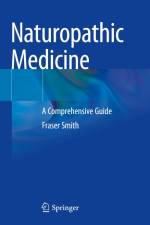av Fraser Smith
1 419,-
This book offers comprehensive coverage of naturopathic medicine. The principles and values of this profession are already clearly stated (i.e., Find and Treat the Cause; Treat the Whole Person, etc.), but few are the textbooks that provide a clear exposition of what the approach is that differs from what is described as conventional or allopathic medicine. The toolkit - herbs or nutrients - then becomes the defining feature, but this is not the most important attribute. To paraphrase the historian of medicine Harris Coulter - in this approach the body reacts creatively to stressors - and the Empirical school or natural medicine approach is more focused on supporting adaptive responses than suppressing symptoms. Or to put it another way, naturopathic physicians certainly do things to ameliorate symptoms, but their real interest is to discern what disturbances to the determining factors of health lead to imbalances, physiological dysfunction, and are generating the symptoms. This is not an attempt to argue that all health issues can get better on their own or that conventional medical interventions aren't capable of producing stellar outcomes. Conventional medicine holds great value, but there remains a concurrent need for a naturopathic approach that helps rebuild the body.There is a need for an approach in medicine that works to support adaptive responses of the body, reduce maladaptive responses, address determining factors of health, and sometimes create temporary homeostasis with agents such as drugs (or certain natural medicines) can play to maintain life when the body's healing responses are insufficient. This book takes this approach and begins by examining what health is and then what states lead to disease. In terms of the basis of disease states, the book teaches about how the lack of coordination in the body's bioregulatory systems (hormones, nervous system, cell signaling) can lead to disease, as well as the impact of irreversible degeneration, genetic damage, chronic stress, etc. The book takes the reader to some of the more common and well described reasons for these states of dysfunction, including the body's inability to process environmental toxins and disruptions to the human microbiome. The book then teaches how to assess a patient, and how various natural therapies impact root causes of disease, the long term consequences, and the various clinical manifestations.The book then takes a systems approach - cardiovascular, pulmonary, etc. This is where most books on the subject start, but instead of breaking out a number of conditions and giving protocols of diet, supplements, herbs etc., the author examines how to restore stability and function to that system. There is in depth coverage of how to confront degenerative processes that make self-healing far more challenging, or perhaps not entirely attainable. The application of the model of healing outlined in previous chapters is applied to each system. Special topics are then covered, ranging from lifespan/primary care considerations to the role of research, the rise of advanced data analytics as decision assistance, to the environmental, cultural, and global determinants of health. Each chapter will additionally include tables that summarize key diagnosis or treatment points, arrayed in an order that reflects the model presented in the book.This is an ideal guide for students in naturopathic medicine, as well as physicians and medical professionals looking to learn more about this field aimed towards maximizing patient resilience.






